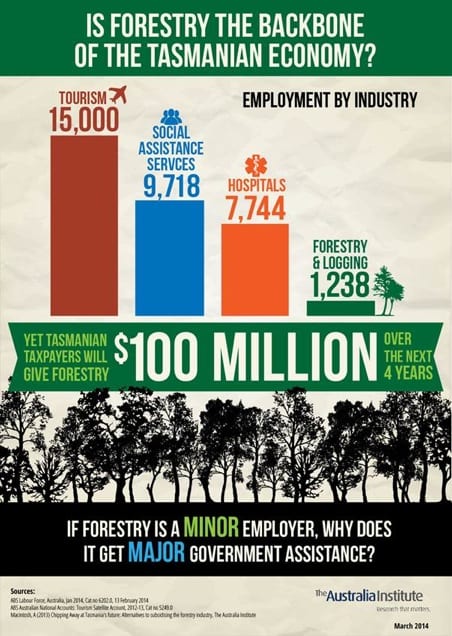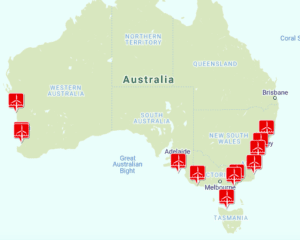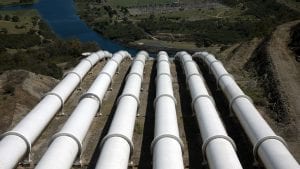When Tony Abbott restated his commitment to strip World Heritage listing from 74,000 hectares of Tasmanian forest – declaring that too much of it was already “locked up” in national parks – he was reinforcing the commonly held myth that forestry is one of the state’s major industries; a tree-lined avenue of untapped economic growth.
“We have quite enough national parks, we have quite enough locked-up forests already,” the PM said in a speech to the ForestWorks dinner in Canberra on Tuesday night. “In fact, in an important respect, we have too much locked-up forest.”
But a new infographic from The Australia Institute challenges this view, illustrating the fact the forestry industry is really a very small part of the Tasmanian economy, generating just over 1,200 jobs – or less than 0.5 per cent of total employment in the state – and, perhaps, not worthy of the huge taxpayer funded subsidies it has been promised.
“Forestry and forest product manufacturing accounts for approximately two per cent of GSP, roughly half of which is attributable to native forestry,” said the TAI in a report published in December – Chipping away at Tasmania’s future: Alternatives to subsidising the forestry industry.
The paper, written by Andrew MacIntosh, argues that the ongoing emphasis on forestry by politicians like Tony Abbott “is misplaced and counterproductive, economically, socially and environmentally.”
“With conditions in the forestry sector likely to remain depressed, at least in the short- to medium- term, there is a need for policy makers to broaden the strategic options for Tasmania,” he writes.
“Part of this shift should include a staged wind-down of native forest harvesting, coupled with the use of the native forest estate to generate carbon credits. The revenue from the carbon credits could then be used to help diversify the Tasmanian economy and build a more resilient community.”










